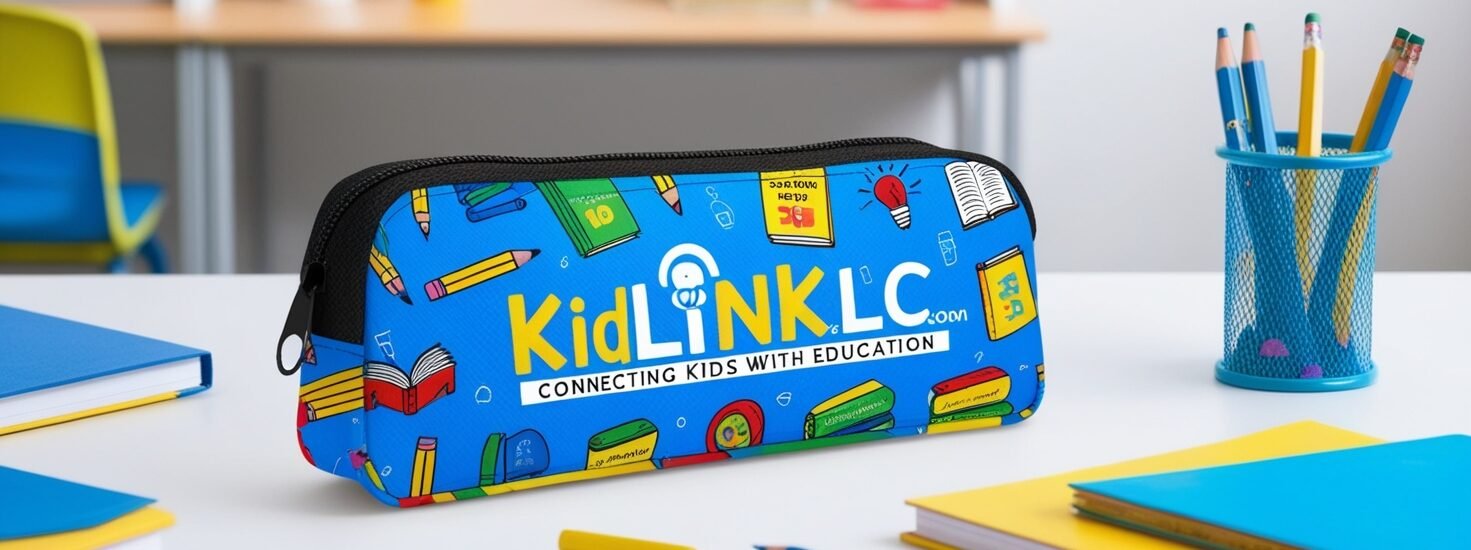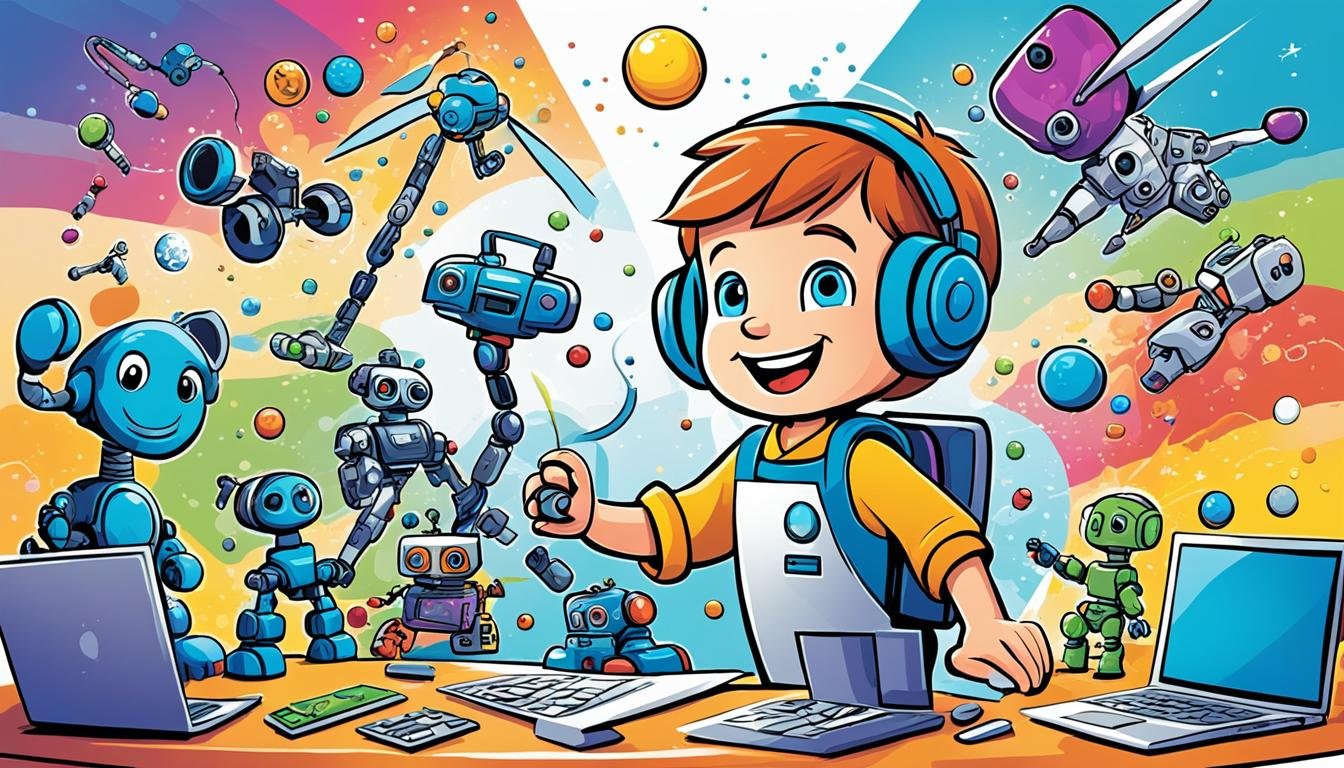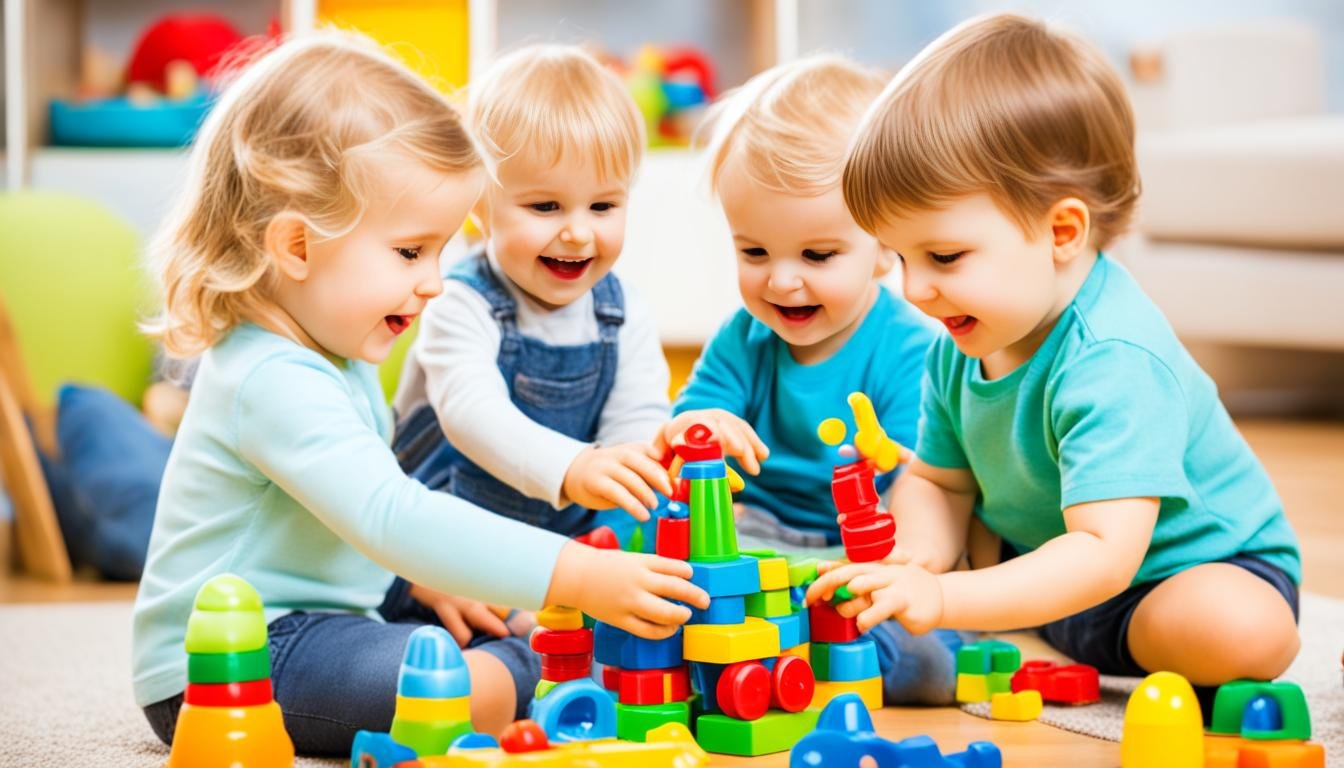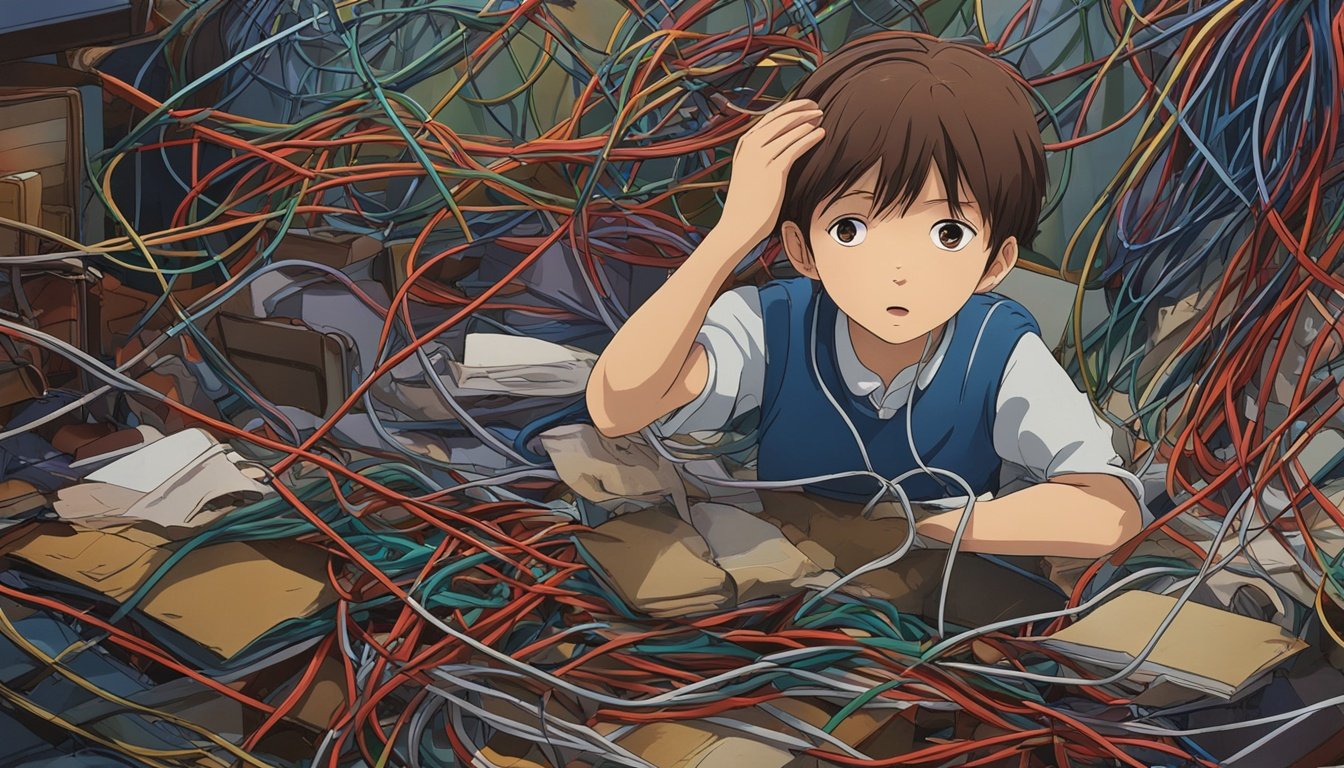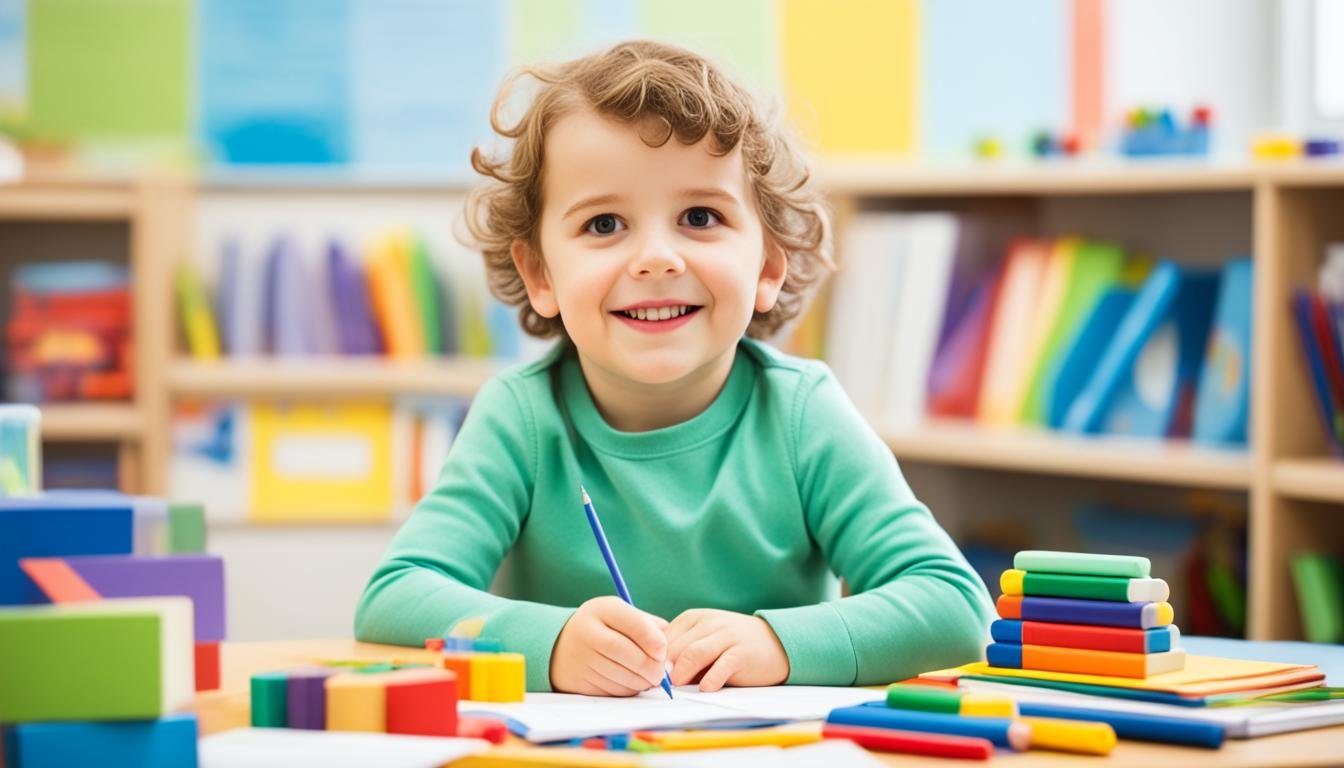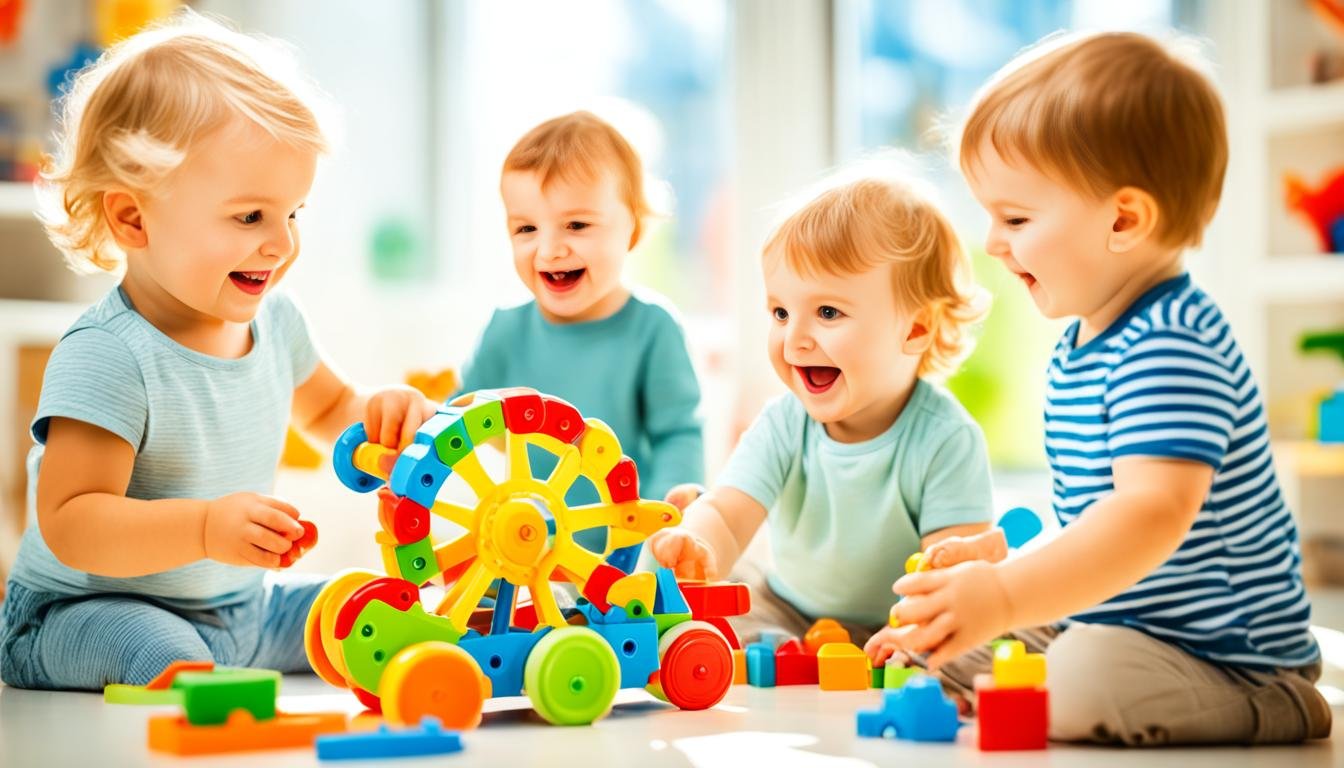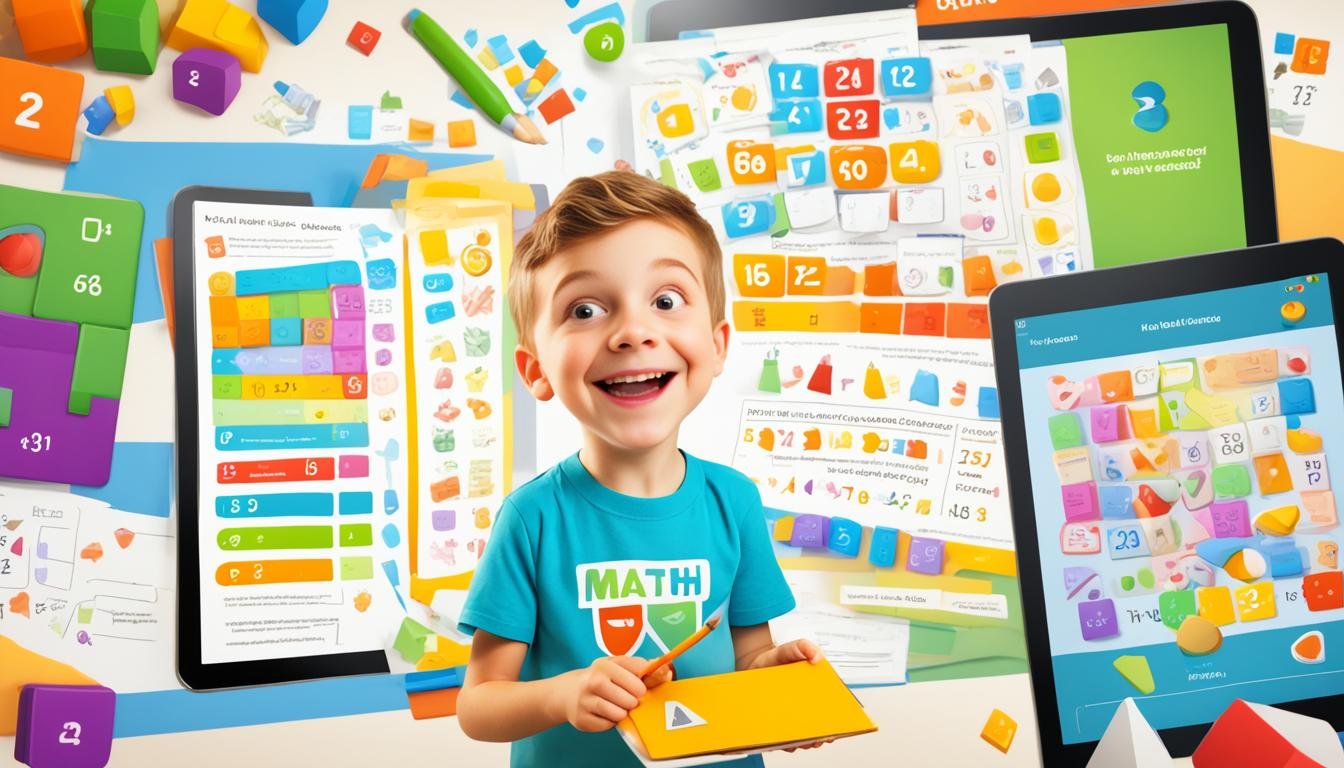Ever thought about how what you do at home affects your child’s stress and anxiety at school? It’s key to know how to help kids handle stress and anxiety in school today. Kids deal with a lot, and managing their stress is crucial for their emotional health. By using the right strategies, you can help them do better in school and feel good about themselves.
Key Takeaways
- Understanding stress sources can be pivotal in addressing childhood anxiety.
- Effective techniques for reducing anxiety in children include balanced routines and physical activity.
- Open communication about stress fosters a supportive environment.
- Utilizing mindfulness can significantly alleviate stress levels in children.
- Recognizing signs of stress is crucial for timely intervention and support.
- Parents play a vital role in modeling positive coping strategies.
Understanding Stress in Children
Stress is a normal feeling kids have when they face challenges and changes. Some stress can be good, helping kids learn to cope and be resilient. But too much stress can hurt their health, affecting their feelings and well-being.
The COVID-19 pandemic made people pay more attention to helping kids with stress. Spotting stressors early is key to supporting them. Changes in school, friends, or home can overwhelm kids.
Talking and supporting your child helps them handle stress. Making a safe space for them to share feelings is important. This helps their emotional health and teaches them how to deal with stress later on.
Knowing about stress and its effects is crucial for helping your child. By teaching them stress management, you help them build resilience and keep their mental health strong.
For more tips on helping kids with stress, check out this link for more resources.
Sources of Stress at School
It’s important to know what causes stress in kids at school. Kids face many stressors that affect their grades and happiness. Things like the need to do well, make friends, and handle family issues make school stressful.
Academic Pressure
Kids feel stressed because of high grade expectations, lots of homework, and tests. They might feel too much pressure to do well, leading to anxiety. This is especially true for kids who find some subjects hard.
It’s key to understand how school stress affects kids’ mental health. This knowledge helps us find ways to support them.
Social Challenges
School can be tough socially too. Kids deal with bullying, feeling left out, and pressure from friends. These issues can hurt their confidence and how they feel about themselves.
Knowing how school social life affects kids is important. It helps us help them manage their stress better.
Family Issues
Family problems can make school stress worse for kids. Things like fights between parents, divorce, or money troubles add to their stress. Kids feel the effects of these issues, making school harder for them.
Knowing how family issues affect kids helps us support them better. For more tips on dealing with these issues, check out this resource.

Recognizing Symptoms of Stress and Anxiety
It’s crucial to spot stress signs in children early to help them. Kids show stress differently than adults, making it key to catch anxiety early. Look for changes in behavior and physical signs that show stress in young people.
Behavioral Changes
Behavior changes are a common sign of stress in kids. You might notice your child acting:
- Irritable or easily upset over small things.
- Having big mood swings that affect their daily life.
- Stepping back from activities they used to love, feeling alone.
Physical Complaints
Kids often show their stress through physical symptoms. They might complain about:
- Headaches with no clear cause.
- Often having stomachaches during school days.
- Going to the school nurse a lot, showing they’re in distress.
Importance of Emotional Well-Being in Children
Promoting emotional wellness in kids is key for their growth. It helps them learn better, make strong friendships, and handle life’s ups and downs. When kids feel emotionally supported, they do well in school and with others.
Using good strategies for emotional health in kids helps a lot. Parents who show love, guide, and play with their kids create a great place for them to grow emotionally. Spotting early signs of trouble lets us help before it gets worse.

A stable, caring place lets kids feel safe to explore their feelings and bounce back from tough times. Talking about feelings, setting achievable goals, and being kind helps them understand and manage their emotions. Getting the right help when needed builds a strong base for their mental health later on.
| Emotional Support Strategies | Impact on Child Development |
|---|---|
| Unconditional love | Boosts self-esteem and confidence |
| Opportunities for play | Enhances social skills and creativity |
| Monitoring emotional signs | Facilitates early intervention |
| Encouraging open communication | Fosters healthy relationships and trust |
Learn about mental health issues that can affect kids. For more info, check out these resources. These tips will help your child’s emotional growth and set them up for a happy life.
Help Children Manage Stress and Anxiety Through Healthy Routines
Creating healthy routines for kids is key to reducing stress and anxiety. Simple practices can make a big difference in your child’s life. Here are two important areas to focus on for your child’s emotional health.
Regular Sleep Schedules
It’s crucial to have a regular sleep schedule for emotional health. Kids between 6-13 need 9 to 12 hours of sleep each night. Setting consistent bedtimes and cutting down on screen time before bed helps improve sleep quality. This, in turn, makes your child more resilient to stress.
By focusing on sleep, you lay a strong foundation for your child’s emotional well-being. This affects their mood and overall attitude.
Balanced Nutrition
Feeding your child a balanced diet is key to their mental health. Eating foods rich in fruits, veggies, and protein helps manage mood and energy. The right diet makes kids less likely to feel stressed.
For ideas on healthy meals your child will like, check out KidLinkLC.com.
| Aspect | Benefits |
|---|---|
| Regular Sleep | Enhances emotional health, boosts stress response |
| Balanced Nutrition | Supports mood, regulates energy levels |
Adding these practices to your child’s daily life helps them manage stress better. It creates a supportive and caring environment for them.
Physical Activity as a Coping Strategy
Adding physical activity to a child’s daily life helps them handle stress better and feel better overall. Exercise can really help kids stay fit and mentally healthy. Let’s look at some easy ways to get kids moving and the best activities for them.
Daily Exercise Recommendations
The U.S. Department of Health says kids need at least 60 minutes of physical activity every day. Being active helps their feelings and keeps them healthy.
Types of Activities for Kids
Offering a mix of fun activities can make exercise enjoyable for kids. Here are some top picks:
- Team sports, such as soccer and basketball
- Dance classes that allow self-expression
- Family walks or bike rides that promote bonding
- Swimming as a fun way to stay active
- Outdoor adventures like hiking or playing in the park
These activities not only help kids relax but also improve their social skills and confidence.

The Role of Mindfulness and Relaxation Techniques
Mindfulness exercises and relaxation techniques can really help kids manage their feelings and reduce stress. By adding these to their daily life, you give them tools to handle stress better. This helps them become more resilient emotionally.
Breathing Exercises
Belly breathing is a simple yet strong technique. It helps kids focus on their breath, which can ease anxiety. When they’re stressed, deep breathing can help them relax and release tightness in their body.
Encouraging them to breathe like this often can make them feel calmer overall.
Guided Imagery Practices
Guided imagery is another great way to help kids. They imagine peaceful scenes or happy times. This mental break is a strong way to deal with stress.
As they picture these calm scenes, they might feel less overwhelmed. Adding these activities to their daily life can boost their emotional health and stress management.
| Technique | Description | Benefits |
|---|---|---|
| Belly Breathing | Concentrating on deep, slow breaths using your diaphragm. | Reduces tension, increases focus, promotes relaxation. |
| Guided Imagery | Using imagination to create mental images of serene environments. | Enhances emotional well-being, alleviates anxiety, fosters creativity. |
Encouraging Open Communication
It’s key to build a strong base of open communication with kids. When they feel they can share their thoughts and feelings, it opens up a space for healthy talks. This way, kids can share their feelings and it’s key in building trust with parents. You can make a safe space for kids to talk about their worries and challenges.
Creating a Safe Space to Talk
To encourage open communication, try these tips:
- Be there and listen during talks. Turn off distractions to show you care.
- Ask open-ended questions to help kids share their thoughts without fear.
- Accept their feelings by saying they matter. This shows their emotions are important.
- Show that it’s okay to be open by sharing your feelings too.
- Have regular chats about their day to keep the conversation going.
Using these methods creates a safe place for kids to talk honestly. This kind of space is key in helping kids share their feelings and grow emotionally.

| Strategy | Benefits |
|---|---|
| Active Listening | Builds trust and makes children feel valued. |
| Open-Ended Questions | Encourages deeper conversation. |
| Validation of Feelings | Helps children understand and process emotions. |
| Modeling Vulnerability | Demonstrates healthy emotional expression. |
| Regular Check-Ins | Promotes ongoing open communication. |
Stress Management Activities for Kids
It’s key for kids to have ways to handle stress for their emotional well-being. Activities like yoga and creative arts are great for this. They help kids deal with anxiety and stress in a good way.
Creative Outlets
Kids can express themselves through art, like drawing or playing music. These activities help them feel less anxious. They also make it fun for kids to relax and enjoy themselves.
Yoga and Meditation
Yoga can help kids relax and know themselves better. Simple poses and breathing exercises teach them to stay calm. Doing yoga and meditation regularly helps kids manage stress better as they get older.
| Activity Type | Description | Benefits |
|---|---|---|
| Creative Arts | Drawing, painting, and music | Promotes emotional expression and mindfulness |
| Yoga | Physical postures and breathing exercises | Enhances relaxation and self-regulation |
| Meditation | Mindfulness and guided imagery | Reduces anxiety and improves focus |
Coping Strategies for Kids
Teaching kids how to cope with challenges helps them grow strong and ready for life. Two key ways to do this are through positive self-talk and learning to solve problems. These methods help kids build confidence and handle stress better.
Positive Self-Talk
Positive self-talk can really boost a child’s confidence. When kids swap negative thoughts for positive ones, they see themselves in a better light. This helps build their self-esteem and lowers their worries about what they can do. You can help by teaching them positive sayings to use when things get tough.
Problem Solving Skills
Learning to solve problems is key for kids to handle challenges well. By making big problems smaller, you help them feel less stuck. This approach encourages them to think on their own and be more independent. Talking with your child about different situations and how to deal with them helps build these important skills.
| Strategy | Description | Benefits |
|---|---|---|
| Positive Self-Talk | Replacing negative thoughts with positive affirmations. | Builds self-esteem in kids, reduces anxiety. |
| Problem Solving Skills | Breaking challenges into smaller, manageable steps. | Enhances independence, reduces feelings of overwhelm. |
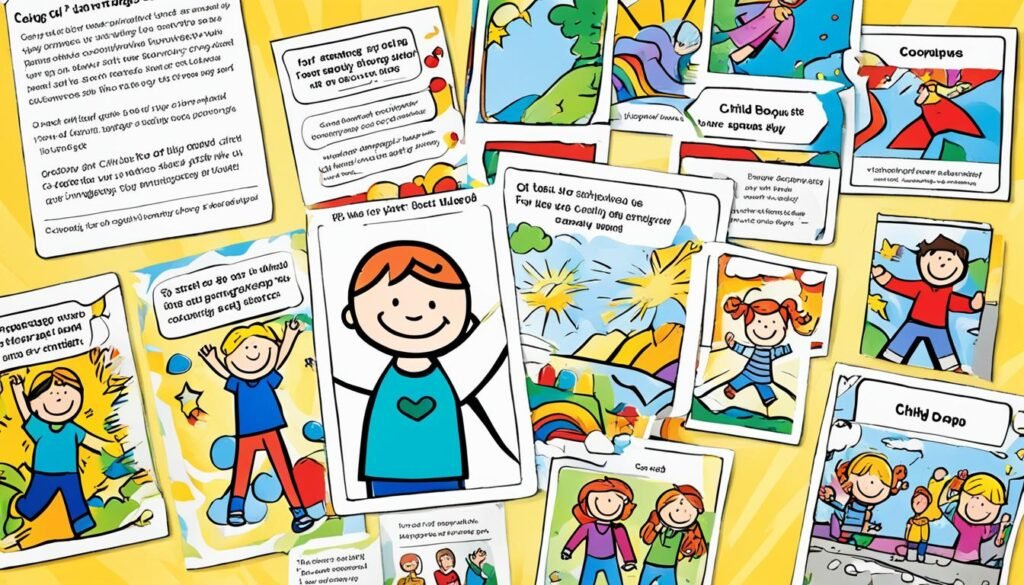
Using Journaling as a Tool for Anxiety Management
Journaling is a great way for kids to handle their anxiety. It lets them share their thoughts and feelings privately. This is key for self-reflection and understanding their emotions. By journaling, your child gets a chance to express themselves and deal with their feelings in a good way.
How to Start Journaling
Start by setting aside time each day for your child to journal. Make sure the place is comfy and quiet. Encourage them to write about their day, feelings, and worries. Tell them it’s okay if it’s not perfect; just focus on expressing themselves.
For more help and ideas, check out resources on the benefits of journaling for kids.
Writing Prompts to Consider
Give your child writing prompts to spark creativity and positivity. Here are some examples:
- List three things they are thankful for.
- Describe a fun moment they enjoyed during the day.
- Write about a challenge they faced and how they overcame it.
- Reflect on what made them smile today.
This can help them focus on the good things and make journaling more rewarding. Sharing these prompts can also help them reflect and process their feelings better. Remember, journaling is part of a bigger plan for mental health that includes eating well and getting enough sleep, as seen on websites.
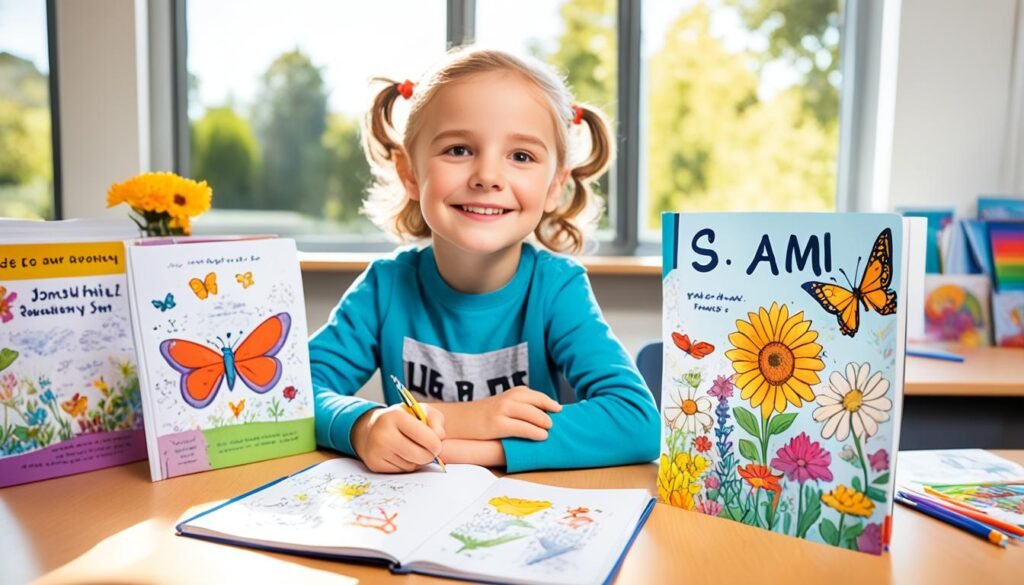
Supporting Children With Psychological Resources
Getting the right mental health help is key for kids facing challenges. Anxiety and stress can really affect their happiness. That’s why it’s important to find help for anxious kids. Child therapy offers many ways to deal with problems, all made by experts for kids’ needs.
Starting with the right kind of help is the first step. Kids might get one-on-one therapy or join group sessions. In these, they learn how to handle stress with others who understand. Some parents look into cognitive-behavioral therapy, which helps kids with anxiety.
Groups like community organizations and schools also offer great support. They teach kids important life skills and help them bounce back from tough times. By getting your child into these programs, you’re giving them tools to manage stress better for the rest of their life.

Techniques for Reducing Anxiety in Children
Finding ways to help children feel less anxious is key for their emotional health. Adding stress-reduction activities to daily life can really help. Exposure therapy is a strong method that slowly helps kids face their fears in a safe way. This helps them gain confidence over time.
Cognitive-behavioral techniques are also very helpful. They teach kids to spot and change negative thoughts. By doing this, they learn to handle stress better. This makes them more resilient and helps them deal with anxiety.

Using a mix of these methods can really help. Teach your child to know what makes them anxious and practice these techniques often. A supportive and structured home helps build emotional strength. Here’s a table with some effective techniques:
| Technique | Description | Benefits |
|---|---|---|
| Exposure Therapy | Gradually introducing fears in a safe space | Builds confidence and reduces fear |
| Cognitive-Behavioral Techniques | Identifying and reframing negative thoughts | Enhances problem-solving skills and emotional control |
Using these techniques can really boost a child’s well-being. It helps them tackle daily challenges with more confidence. Every step you take to lessen anxiety helps your child and your whole family.
How Parents Can Foster a Supportive Environment
Creating a supportive environment is key for your child’s emotional growth. By practicing supportive parenting, you help them deal with stress and anxiety. It’s important to model positive coping skills and encourage independence.
Modeling Positive Coping Skills
Your actions set the stage for your child. Show them how to handle stress in a healthy way. This teaches them the value of finding good solutions.
When you deal with stress by taking deep breaths or talking things out, your child learns from you. This kind of influence can deeply affect their anxiety levels. They tend to copy how you handle emotions.
Encouraging Independence
Letting kids face small challenges helps them deal with bigger ones. By giving them space to solve problems on their own, you’re building their resilience. Look for chances for them to make their own decisions, like organizing homework or planning free time.
This independence boosts their confidence and strengthens their ability to cope. It’s a great way to support their growth.

For more tips on creating a supportive home, check out important resources. These can guide you in practicing effective parenting.
When to Seek Professional Help
Knowing when to get help for your child’s anxiety is key for their emotional health. Spotting the signs of needing child therapist services can stop small problems from getting bigger. Paying attention to how your child feels and acts is crucial in deciding if they need help.
Signs That Professional Intervention is Needed
Watch for anxiety that keeps your child from doing daily tasks or sudden changes in their behavior. Look out for feelings of hopelessness or a lack of interest in fun activities. As a parent, noticing these signs can guide you in knowing when to seek child counseling. Getting help early is important, as it can greatly help your child manage their feelings better.
Here’s a list of common signs that suggest you should get professional help:
| Signs | Description |
|---|---|
| Persistent Anxiety | Anxiety that makes it hard for your child to do everyday things, like going to school or playing with friends. |
| Behavior Changes | Unexpected changes in how your child acts, like becoming more quiet or easily upset. |
| Expressions of Hopelessness | Often saying they feel hopeless or don’t care about anything. |
Acting early on your child’s mental health can help find professional help for anxiety in kids. Don’t wait to get help when you see signs; your child needs the best support.

Conclusion
It’s vital to help children manage stress and anxiety for their well-being and resilience. Using child mental health strategies can make a big difference. It’s important to create a supportive space that helps them grow emotionally.
By teaching kids how to express their feelings, you help them handle daily challenges better. Activities that promote relaxation, mindfulness, and physical activity are key. They help kids deal with stress and anxiety and build skills for life.
As a parent or teacher, being proactive can really help kids cope with challenges. Your efforts can make a big difference in their academic and social success. By using these techniques, you’re helping children grow into resilient individuals.
In short, these practical methods help you support a child’s emotional growth. They learn to face the world with strength. Your dedication to these strategies will lead to healthier minds and brighter futures for the kids you care about.
